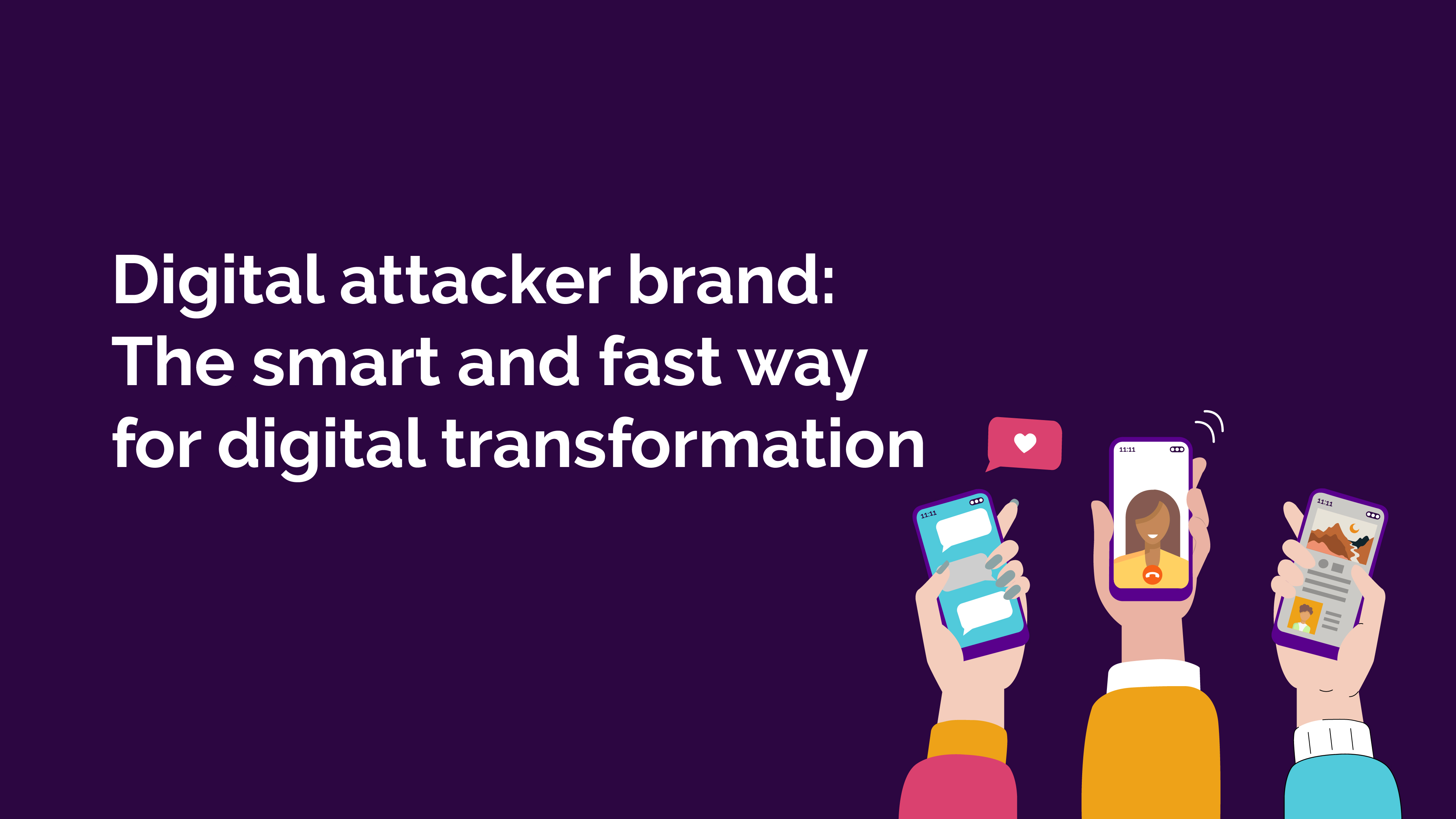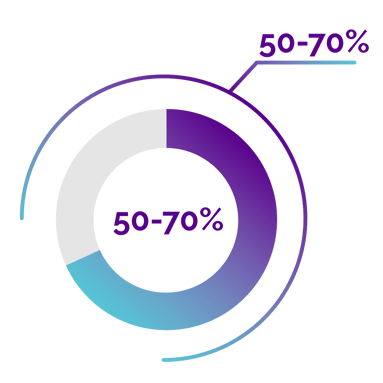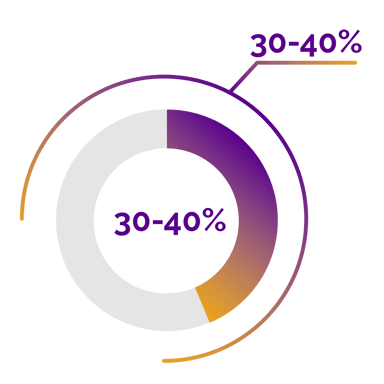Digital Attacker Brands: The Smart and Fast Way for Digital Transformation

In today's world, digital is, without a shadow of a doubt, the new battleground for telco operators. The "digital-first" approach is at the top of the agenda for most operators. However, in attempts to stay one step ahead of the competition, CSPs have, over time, launched a too complex array of products and services to suit every possible segment. Most CSPs do not offer as simple and convenient digital solutions to their customers as many OTT service providers have been doing it for a long time. As a consequence, a prominent need for digital natives is not covered by most CSPs and significant revenue opportunities are not addressed.
Nonetheless, the rules of the game have changed and how the CSPs respond or engage with customers has become the key point to stand out in the highly competitive market.
Last year, the TM forum published a report: ‘Digital Maturity: Are We on the Right Path?’ highlighting that a major factor for the difficulties CSPs are facing in digitally transforming is legacy systems and technologies. The report stresses that operators are too busy trying to handle the day-to-day challenges of running their business to be able to spend any time looking at their digital journey - something that can be avoided by launching a digital attacker.
The smart digital attacker strategy
Digital transformation can be challenging, especially for established telcos. Therefore, to tackle and speed up the digitalization process, some operators are adopting a "digital attacker brand" business strategy. This strategy involves the creation and development of new dedicated digital propositions as second brands or sub-brands alongside their current offerings. This approach is enabling telcos to launch new, differentiated and more personalized brand services built on new digital business platforms quickly and independently from the mainstream legacy business.
A recent McKinsey & Co. report found that these new digital attackers brands usually contribute approximately 25% of the overall gross additional subscribers to incumbent telcos within four quarters following their launch.
CSPs also benefit from this success by creating a digital foundation for their business that is future-proof and provides the capability to migrate the legacy business to the new digital platform.
Digital greenfield brands - the foundation for low-risk BSS transformation
One of the effects of the COVID-19 crisis is the increased levels of digital literacy among consumers. At first, these digital sub-brands were often aimed at a specific segment, such as 'Digital Natives' that might have perceived the parent company as 'old fashioned'. Moreover, they operated at a lower cost and the main offer was based on price. This has been changing over the years and now more segments are digitally literate and people have learned that they can do everything online without visiting a physical store.
These new sub-brands have offered telcos a blank canvas to digitally transform and empower them to grow a new business offering at low risk. This approach presents a solution to the legacy problem in a low-risk and cost-efficient way. As new Digital BSS are built using the latest no-code and cloud-native approaches the end state of having all CSP customers (for all brands) running on a Digital BSS could be closer than many CSPs think.
According to the McKinsey report, these digital attacker brands have proven to be more cost-efficient in customer acquisition than the parent companies, with an acquisition cost that is roughly half that of the parent brand. These units can reduce the cost to serve by 50 -70 % per customer while delivering a better customer experience with NPS 30-40% higher than the incumbent competitor.

Costs to serve are 50% to 70% lower for Digital Operators than traditional operators*

Net Promoter Scores for Digital Operators share 30 to 40% higher than traditional operators*
The child could transform the parent
Digital attacker brands launched by incumbents have varying levels of integration with the parent company. Some incumbents treat their digital attacker as a separate entity with which to stimulate revenue growth by reaching underserved customer segments and quickly launching new products. They may also experience synergies with the existing business— for instance, by sharing fast, low-cost innovation.
Telcos can take advantage of the digital attacker brand strategy in several dimensions:
-
Monetization: Digital attackers have demonstrated that they can monetize by focusing on a specific customer segment with a narrow value proposition that addresses that segment’s needs.
-
Early adopters of top-notch technology: Digital attackers are using the latest technologies available on market to achieve the best product performance and add extra value via a competitive set of features.
-
A customer-centered proposition: The offering must align with customers’ needs and expectations.
-
Lean operations: The best attacker platforms run low-cost operations by leveraging next-generation technology, as swype has demonstrated with its cloud-based platform.
Launching a digital attacker brand
McKinsey's report highlights a few critical steps to the launch of a digital attacker brand:
-
A radically simplified and differentiated product. Over the years, operators' product portfolios have become too complex. Therefore, the key to success is to simplify their offers to stand out and appeal to today's demanding customers. For instance, our customer Sunrise Communications has launched swype with only two different offers (monthly and daily). Making it easy and clear for the user to choose the best plan that suits them.
-
Ultra-easy user experience. These new digital brands can start fresh with platforms that are intuitive interface and are simple to use. Continuously improving the usability and user experience of mobile applications are key to attract new, digital-afin customers and to gain market share.
The combination of simplified offers and intuitive user-friendly design can significantly improve the customer self-service, thus dropping the cost to serve. For instance, the swype app, developed by Moflix, has an intuitive design that is continuously improved based on customer feedback. Moreover, the app has a Q&A section, where users can find the most commonly asked questions and in-app chat support for more help.
-
Building flexible technology that encourages innovation. The digital attacker brands need a flexible IT stack that operates independently of the incumbent's IT system. These new IT stacks can take advantage of cloud-native deployments in order to simplify IT operations and reduce operational costs. These IT stacks have a microservices-based architecture that can offer complete integration with digital channels while simultaneously implementing customized user experiences (e.g. Identity verification, digital payments, subscription management, etc.)
-
Driving digital sales with advanced analytics. According to McKinsey's report, digital attackers their new promotions and campaigns on a very short idea-to-execute cycle: a few days instead of several weeks as most incumbents. As an example of this, swype implemented weekly marketing sprints; and the entire marketing system is configured to move at pace, including all external partners.
Incumbents that embrace the scale insurgent mentality stand a better chance of defending their current business while also targeting new customer segments and new markets; this approach sees the legacy problem go away in a low-risk and cost-efficient manner.
Our fully digital cloud-based solution offers a seamless customer onboarding experience and the simplification of core business processes such as billing, subscription management and customer support via app; as well as the latest technologies such as eSim, big data analysis based on machine learning, scalable backend designed for big volumes of data. Moflix develops and launches customizable white-label digital solutions for telcos at low risk, at low cost and within only 100 days - without the need of an expensive and complex IT transformation. Are you ready?
